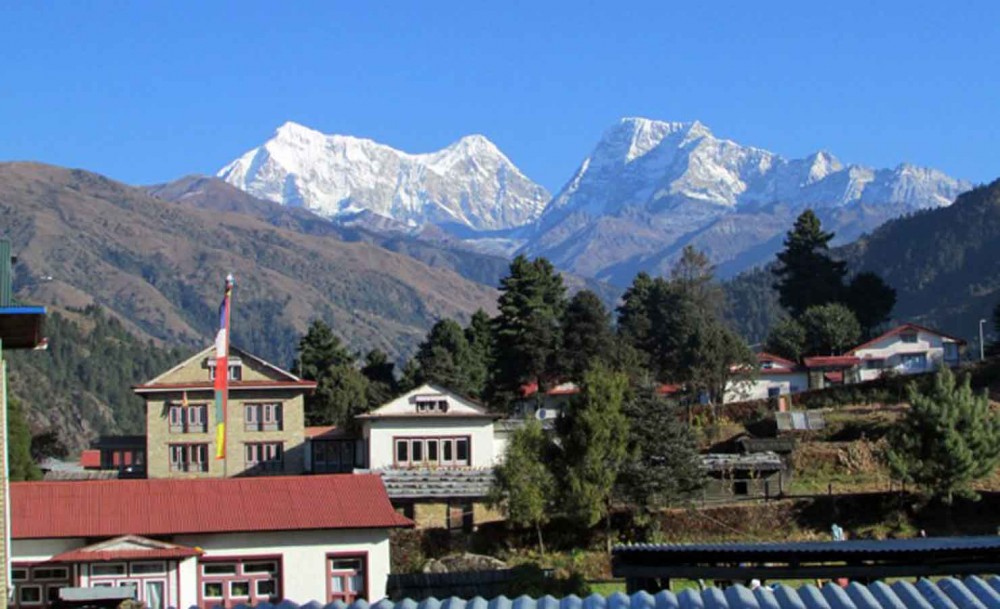
☰
The best view come after hardest climb.
In a short form “Trekking is an act of walking for pleasure”.
Trekking is walking along the mountain/ Hill / Himalayan trails for pleasure or sports. It provides an
opportunity
to explore the villages, villagers, valleys, mountains and its interior. So trekking means foot travel on
mountain
trails.
The Wikipedia’s definition of trekking: "Trekking is a form of walking, undertaken with the specific purpose of
exploring and enjoying the scenery. It usually takes place on trails in areas of relatively unspoiled
wilderness.
"

Either on beaten trails or off the beaten path, which is known as virgin tracks, Nepal is a trekker's paradise.
The organic rhythm of foot travel is a wonderful way to explore and make meaningful contact with the country and
its friendly people. Trekking usually consists of a series of ascents and descents walking 5 to 7 hours (9 to 14
kms per day on average with a guide, and porters and on some occasions pack animals).
Trekkers rely on ou staff for path finding and an introduction to the local people, culture, religion, and
lifestyle. A trekking route will often pass through forests of rhododendron, bamboo, oak, and hemlock, visiting
one or two villages each day.
Rivers are crossed on log passages or suspension bridges. The Himalayas of Nepal are the most popular trekking
region in the world.
It’s not unusual to cross snowfields in the morning and bathe in sub-tropical streams in the afternoon. For the
most part, trekking routes are well traveled by local people, but remain unmarked by sign posts.
The objective of trekking is not just the particular destination, but the journey itself. You travel at a modest
pace, observing nature, rural communities, and spectacular mountain panoramas.
Our job is to ensure your comfort and safety as we take you where you want to go, at your own pace.
We show you what you have come to see, and help you discover things you had no idea existed there!
Nepal Trekking Information - A trekker's paradise offer finest trekking trails in the world to Everest base
camp,
Annapurna region, Langtang, Mustang and other High Himalayan sites.
Nepal is Situated in the lap of the himalayas, Nepal, now officially the Federal Democratic Republic of Nepal, is a landlocked country in South Asia and the world's youngest republic. It is bordered to the north by the People's Republic of China, and to the south, east, and west by India with an area of 147,181 square kilometres (56,827 sq mi) and a population of approximately 30 million. Nepal is the world's 93rd largest country by land mass. Kathmandu is the nation's capital and the country's largest metropolitan city. Nepal is a country of highly diverse and rich geography, culture, and religions. The mountainous north contains eight of the world's ten highest mountains, including the highest, Mount Everest. Nepal is linked historically with the birthplace of Gautam Buddha.

| S.N | Heading | Information |
|---|---|---|
| 1. | Country Name | Nepal |
| 2. | Capital | Kathmandu |
| 3. | Location | Southern Asia, between China and India |
| 4. | Geographic coordinates | 28 00 N, 84 00 E |
| 5. | Map references | Asia |
| 6. | Area | 147,181 sq km |
| 7. | Land | 143,181 sq km |
| 8. | Water | 4,000 sq km |
| 9. | Area - comparative | slightly larger than Arkansas |
| 10. | Land boundaries-total | 2,926 km |
| 11. | Border countries | China 1,236 km, India 1,690 km |
| 12. | Coastline | 0 km (landlocked) |
| 13. | Maritime claims | none (landlocked) |
| 14. | Climate | varies from cool summers and severe winters in north to subtropical summers and mild winters in south | 15. | Terrain | Tarai or flat river plain of the Ganges in south, central hill region, rugged Himalayas in north |
| 16. | Elevation extremes | lowest point: Kanchan Kalan 70 m highest point: Mount Everest 8,848 m |
| 17. | Natural resources | quartz, water, timber, hydropower, scenic beauty, small deposits of lignite, copper, cobalt, iron ore. |
| 18. | Area coverage | 0.03% in world 0.3%in asia |
| 19. | Natural hazards | severe thunderstorms, flooding, landslides, drought, and famine depending on the timing, intensity, and duration of the summer monsoons. |
| 20. | Environment-international agreements | party to: Biodiversity, Climate Change, Climate Change- Kyoto Protocol, Desertification, Endangered
Species,
Hazardous Wastes, Law of the Sea,Ozone Layer Protection, Tropical Timber 83, Tropical Timber
94,Wetlandssigned, but not ratified Marine Life Conservation. |
| 21. | Geography - note | landlocked, strategic location between China and India, contains eight of world's 10 highest peaks, including Mount Everest and Kanchenjunga - the world'stallest and third tallest - on the borders with China and India respectively |

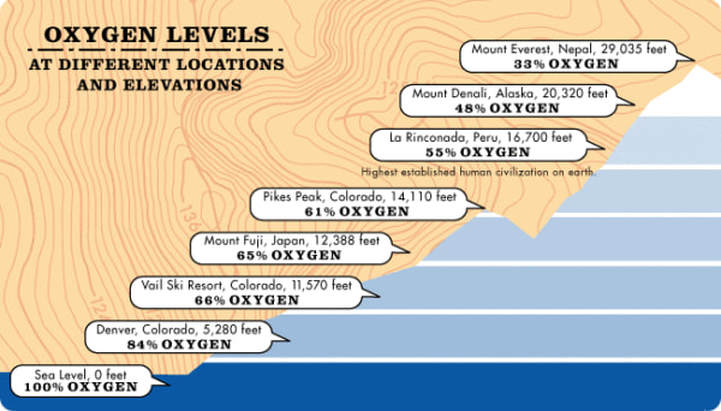
Altitude sickness is known as an Acute Mountain Sickness (AMS). Generally it occurs when people ascend up to
the
high altitude too quickly [generally above 3000 m]. AMS occurs when the body does not adapt well to the lack of
oxygen present at higher altitudes. At 5490 meters (18,000ft), there is just half the oxygen available as there
is
at sea level, while there is only a third available at the summit of Mount Everest. The itineraries of the treks
of Agile Adventure Treks are designed to reduce the risk of altitude sickness as much as possible, although
individual susceptibility to altitude sickness seems to be genetically determined

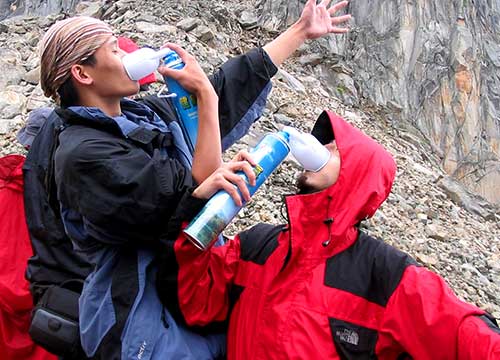
If, the above mention symptoms get worse and s/he could not take any precautions, one can die within the period of 12 hours, but if one takes precautions immediately, it takes one or two days to get well. Therefore, if one gets such symptoms, it is better one take treatment with medication, oxygen and descent down. Usually 4 to 8mg of dexamethasone is given as a first dose to those who suffer from such sickness and then 4mg Diamox is given an every six hours gap. Similarly, 2-4 litres/minute oxygen is given and one is taken to down if it is necessary.
This is a serious case, if one gets the above mention symptoms worse, furthermore, if one accumulates of fluid in the lungs and mild fever, and then, there is chance of High Altitude Pulmonary Edema (HAPE). The treatment, one is give the oxygen at the rate of 4 liters a minute, using Portable Altitude Chamber (PAC). If there is no PAC bag or oxygen then one is taken down to the low altitude, it is only the way of life saving. the HAPE can also lead to unconsciousness are death in short period of time.
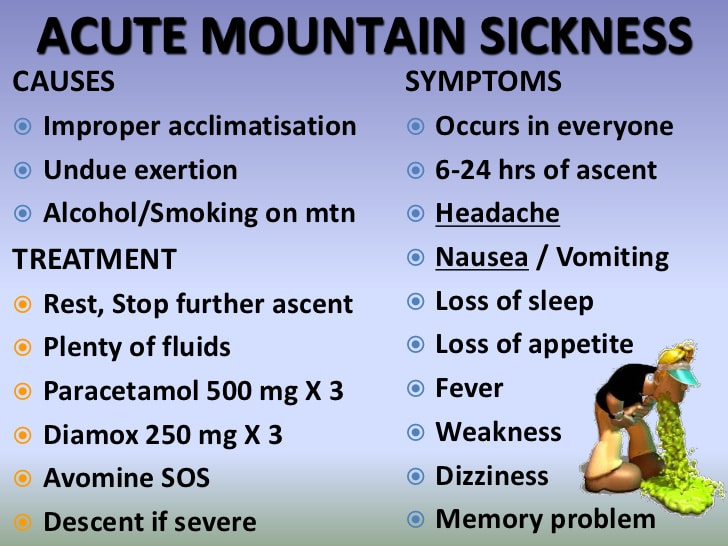

Trekking in Nepal can be undertaken throughout the year. There are four seasons in Nepal. Each season has its distinct attraction to offer. The Nepal trekking season is classified as follows:
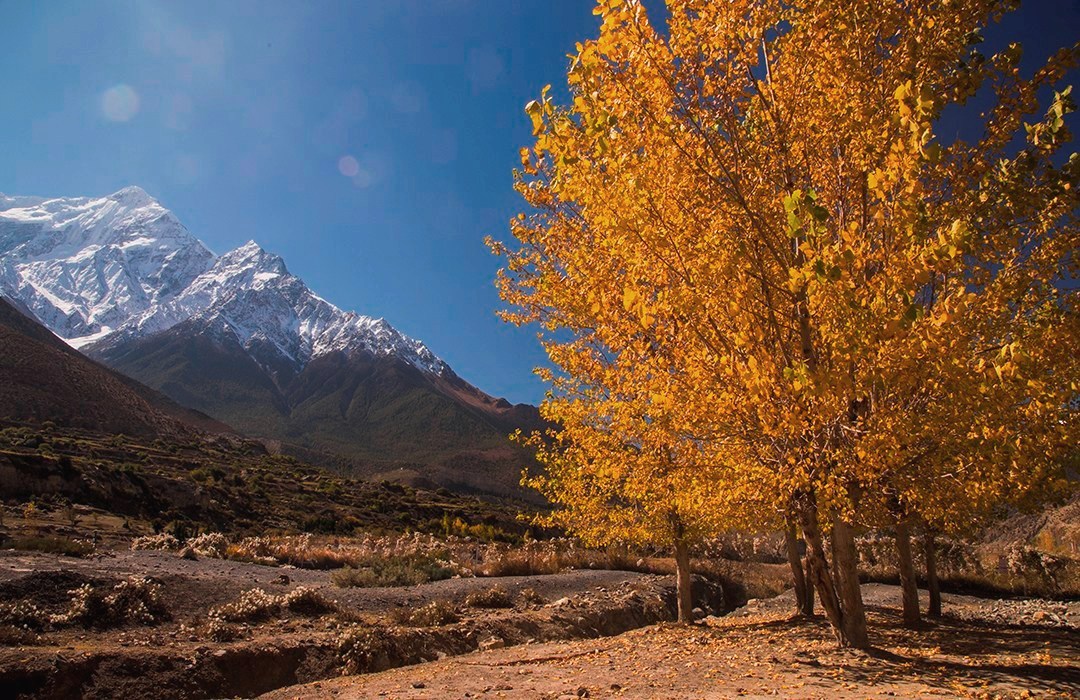
Autumn is considered as the best trekking season for the trekking in Nepal. September, October and November are fall in this trekking season in Nepal. During in this season offers excellent weather and beautiful mountain views. Temperature is moderate, making it a good time for any trekking. The sky is generally clear with outstanding views. Occasionally short storms may dump considerable snow at high altitudes.
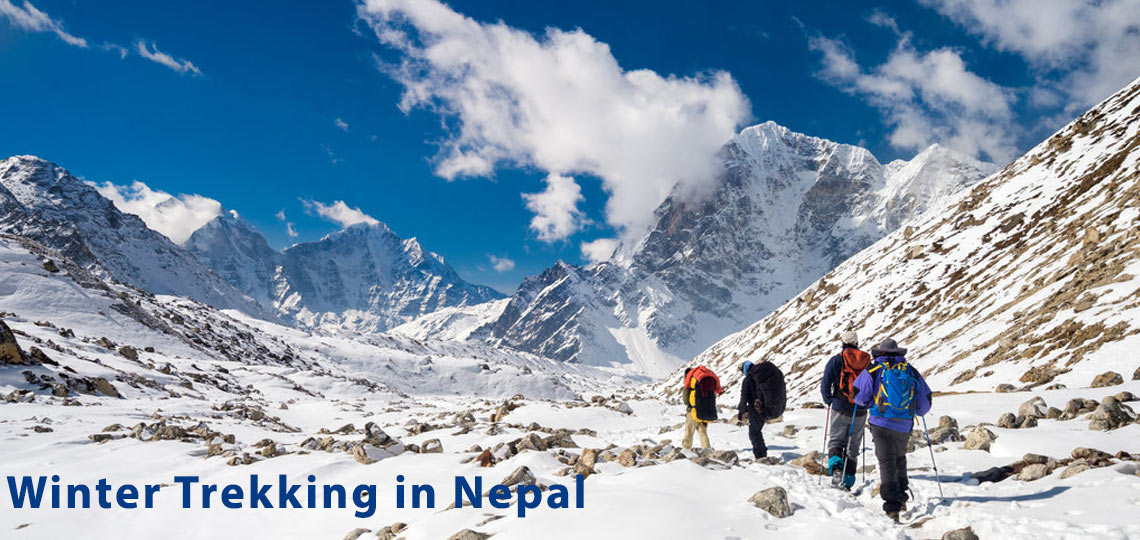
This season is noted for occasional snowfall at higher elevations in Himalayas. Though it gets colder in night, often it offers the clear day / blue sky and relatively less trekkers on the trail. However, we need to be selective in choosing the winter trekking as climbing and crossing high passes trip won’t be an ideal option. Trek like Everest base camp, Annapurna Panorama, Jomsom Muktinath, Panchase Hill , Annapurna Sanctuary, Instant Everest treks etc can be done even in winter.

Different varieties of wild flowers, specially the rhododendrons, make the hillside above 5000 meters a haunting paradise during this season. It is mildly warm at lower elevations and at higher elevation over 4000 meters the mountain views are excellent and temperature is quite moderate.

Summer months really continue up to mid-September making travel wet and warm. These times are blessed for the keen botanist as the higher valleys and meadows blossom with flowers and lush vegetation. Insect repellent is a nice addition to your What to Bring list. During this season, you can trek in the rain-shadow (places are out of reach of the rain clouds because of the high mountains) areas north of the Himalaya like Mustang and Dolpo.
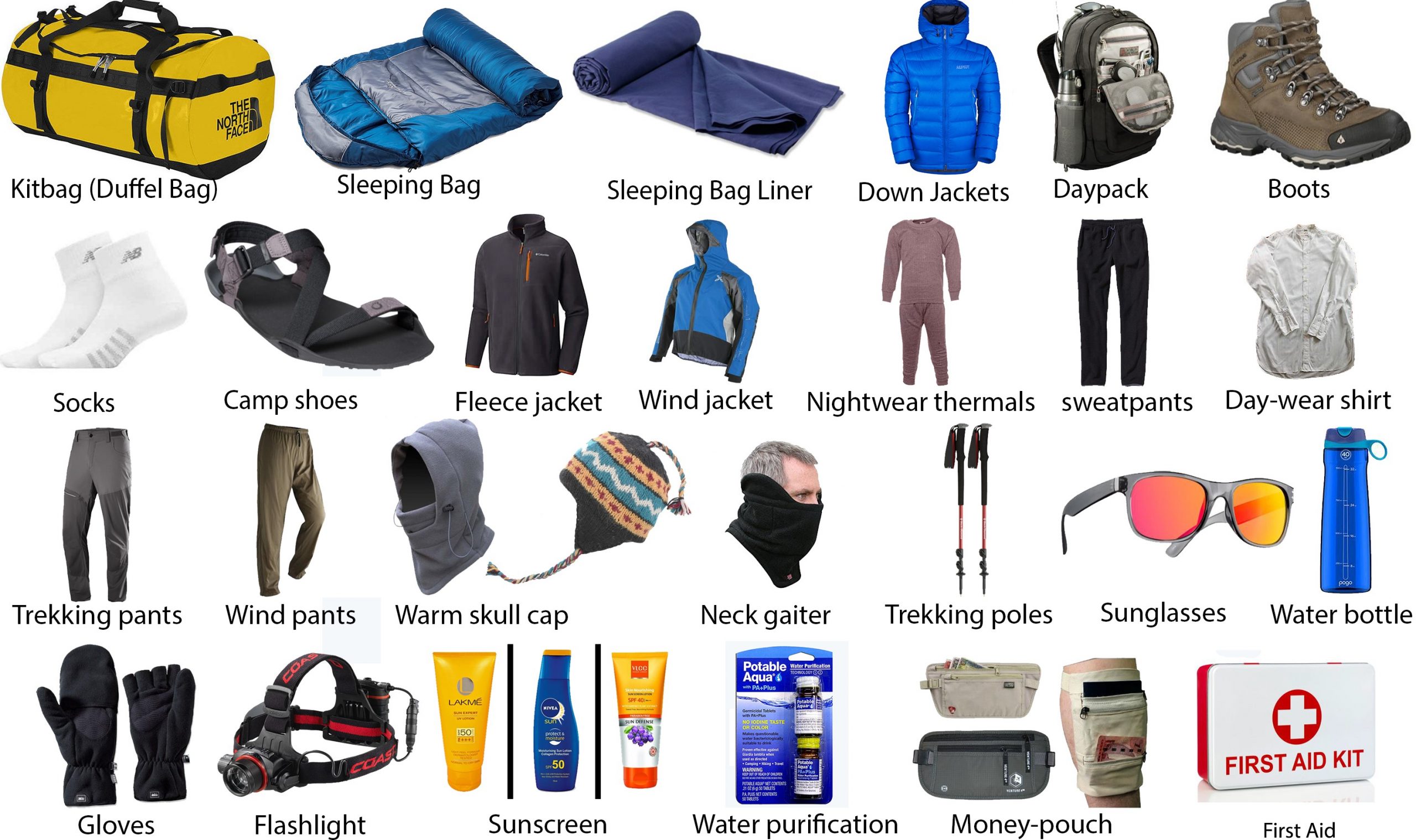
During The travelling time you need to Check your equipment list , Same as Nepal trekking or visiting time you Need to manage your equipment for your easy and comfortable Journey . Here I give you some suggestion packing list :
Kathmandu has ranges of good trekking stores and you can get every needed thing for the trekking. North Face, Mountain Hard wear and other big show rooms are in Thamel and other centers. Easy to rent items are down jacket and sleeping bag, most of the things are fake but you get on good price. Shoes are recommended to buy from your home.
Valid passport, 3 extra passport photographs (for trekking permits), travel insurance, airline tickets, luggage tags. Visas can be obtained upon entry into Nepal visit our visa page for the details.
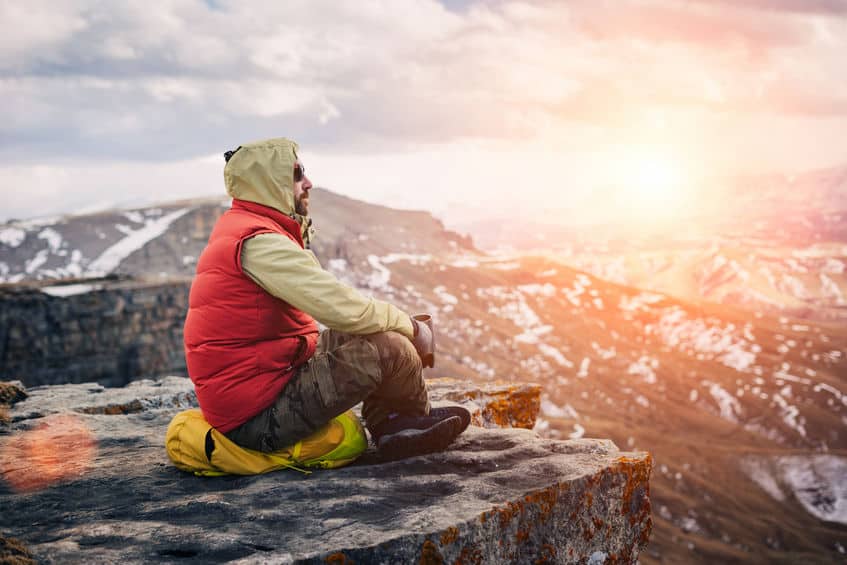
It is the most Beginning things before planned Nepal trekking to be a prepare by Mental way for trekking. It is possible to do successfully for this beautiful yet challenging trip. You should always remain in a positive state of mind, but not overly arrogant. Try to anticipate various different scenarios, which you may possibly encounter on the mountain and try to work out the most suitable course of action, mentally by yourself or even as a group. Trekking in the mountains its not easy and you will not find the comfortable as you are getting in your home and major cities. Nowadays there are nicest hotels in Everest Base Camp trekking route than before but above Namche there small tea houses run by local Sherpa people. sometimes we can see bugs, dirts, and in some lodges smells even Toilets (bathrooms) are not good, small beds. Some hotels and tea houses has western style toilet but mostly there are not, there are options for showers in tea houses but most of trekker use wipes. Be sure that you are ready to explore the true mountain life and immerse yourself in the trekking culture.
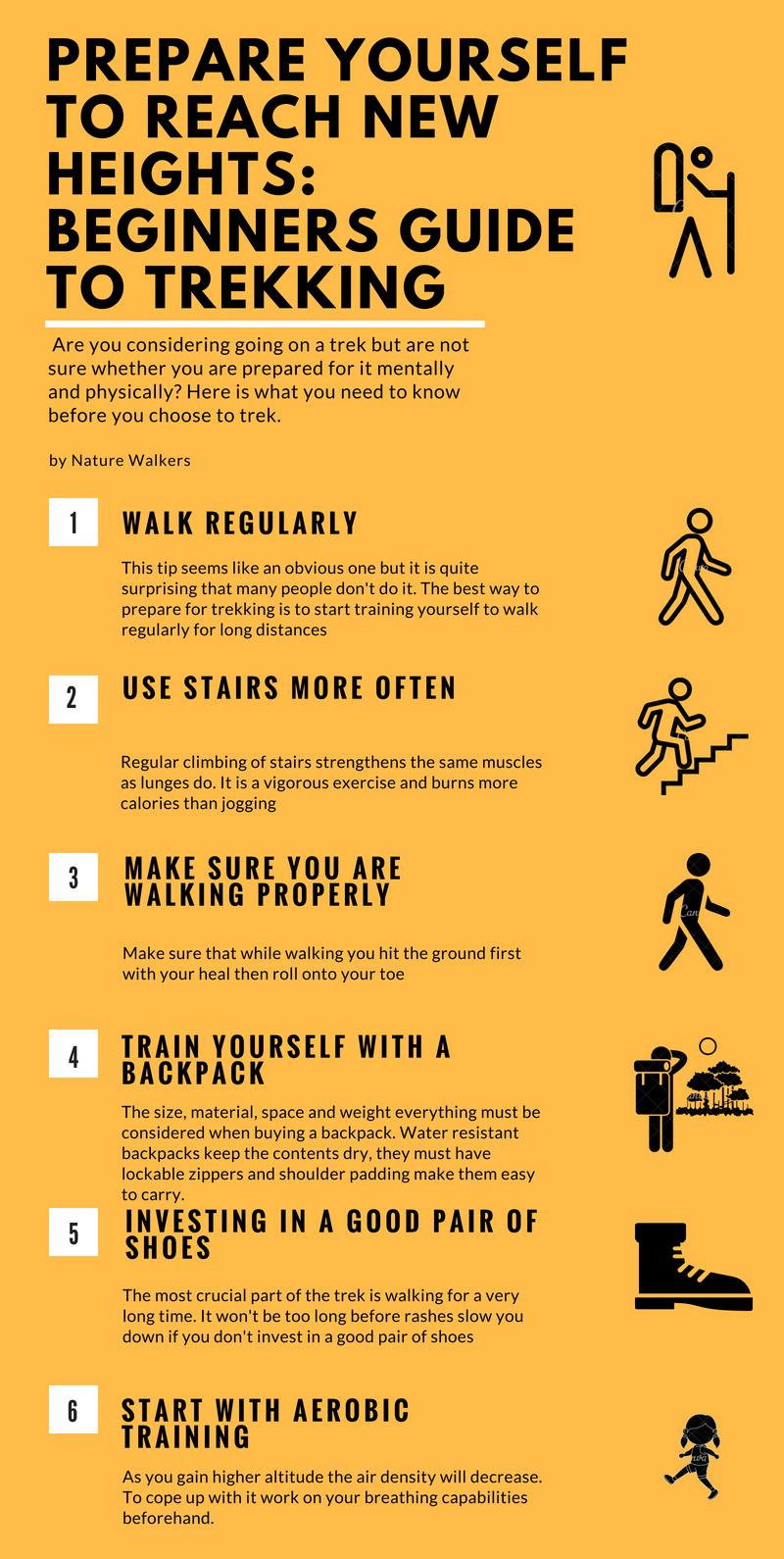
Everest Base camp trekking route is not a technical climbing but remember you have to walk above 2500m from sea level. At least 3 to 4 months before trek you have to train your body to complete this trek. Cycling, running, and stair climbing about 1 hour a few times a week is the best way to train and prepare your legs for trek. Yoga is a great way to stretch and strengthen your muscles.

Your body will be dehydrate faster in high altitudes than at sea level so it is very important to drink water throughout the day. Water can be purified from mountain streams, boiled in tea houses, or our less favorite and not environmentally conscious way is to buy bottled water along the way.
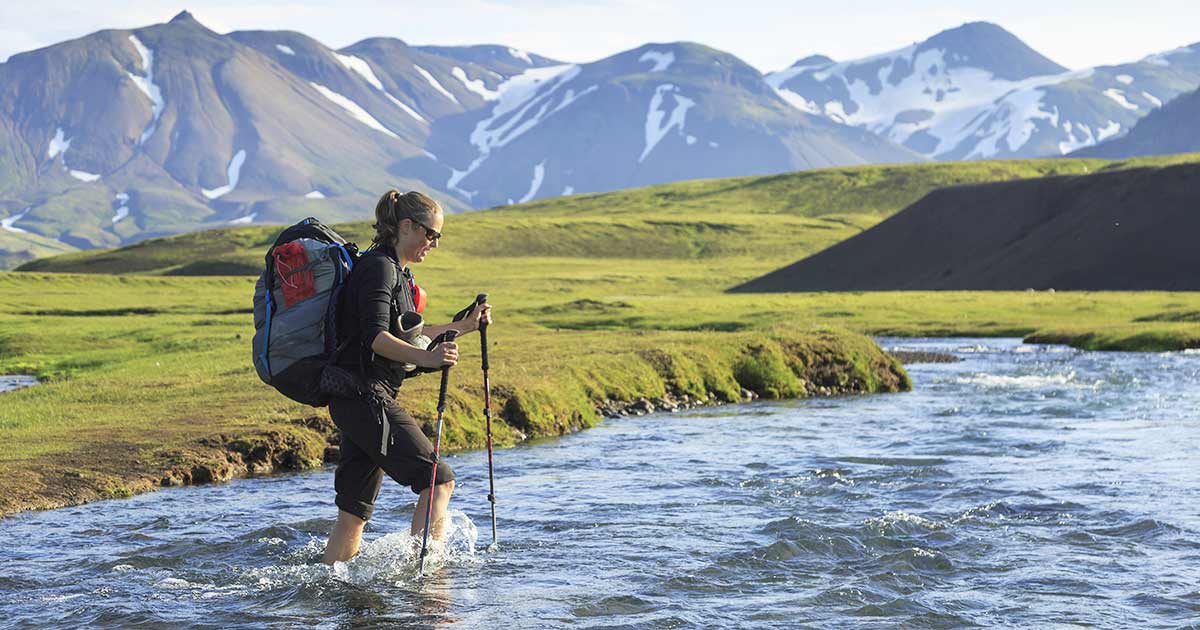
Always maintain your walking pace during the Everest Base Camp Trekking Route. Dont run if the trail is flat and easy! Remember you are in marathon! The more you push yourself, the more difficult the days will be ahead, and the more difficult it will be to adjust to the altitude. Follow your guides instructions, they are the experts.

TIMS card is for Trekkers safety.
With the distinction of Nepal as a trekking destination and its growing charm, a provision of the Trekkers'
Information Management System (TIMS) has been implemented to ensure safety and security of the trekkers and to
control illegal trekking operations.
As a trekker entering a protected area in Nepal, you will be asked to provide some information about the dates
of
your trip, the itinerary, and a contact number. These data will be inserted in the visitors’ database, where
they
can be accessed for park management purposes or in case of accidents and/or natural calamities, in order to
inform
the concerned institutions about the trekkers inside the park at anytime.
TIMS cards should be collected by both Free Individual Trekkers (FITs) and trekkers taking the service of
government authorized trekking agencies.
Past experiences have revealed that difficulties were seen while carrying out rescue operations during times of
accidents and natural calamities. Due to the lack of proper record system of trekkers, rescue and search
missions
used to face difficulties in spotting the missing trekkers. Based on the data collected through TIMS cards,
however, it will be possible to know the position of a trekker in case a rescue operation is needed.
The provision of Trekkers' Information Management System (TIMS) came into effect on January 1, 2008. Since then,
the Trekking Agencies Association of Nepal (TAAN) and Nepal Tourism Board (NTB) started recording trekkers’
details and began issuing TIMS Card to trekkers.
NTB and TAAN signed a Memorandum of Understanding (MoU) on March 18, 2010 to implement the TIMS system in a new
format from April 1, 2010. NTB and TAAN have introduced separate TIMS Cards for FITs and organized groups. FITs
need to have Green TIMS cards by paying Nepali currency equivalent to US $20 per person, while those travelling
in
groups need to have Blue TIMS cards by paying Nepali currency equivalent to US $10 per person. Trekkers taking
the
service of trekking agencies can pay fee for TIMS card in US dollars.
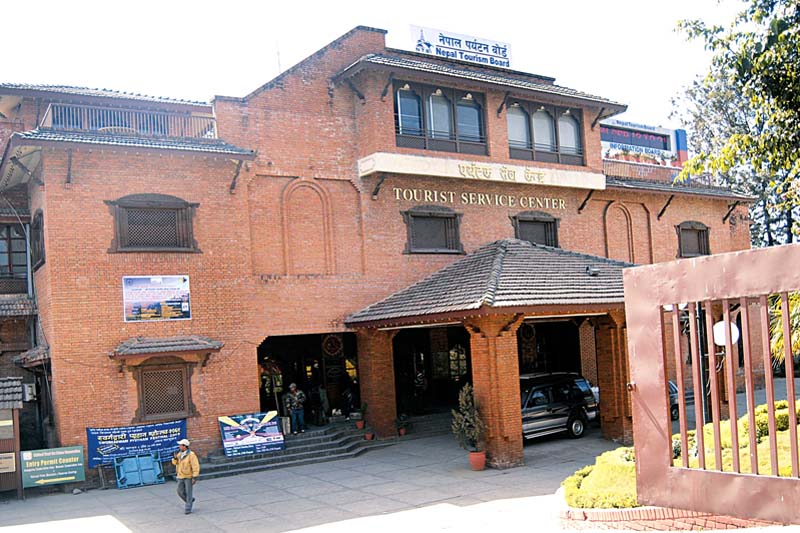
Free Individual Trekkers can obtain TIMS cards at the offices of Nepal Tourism Board in Kathmandu and Pokhara, TAAN Secretariat at Maligaon and TAAN Pokhara Secretariat in Pokhara upon filling the TIMS application firm.
Trekking companies will collect trekkers’ data and enter it in the central database and will provide trekkers with a TIMS card after paying fee prescribed above.
-TIMS counter at TAAN follows regular working hours (10am-5pm) and 365 days a year.
-NTB Offices follow government working hours and days.
-Trekking agencies open 12 hours a day seven days a week.
- To obtain TIMS Card you need copy of:
a) Passport
b) two (2) Passport-size Photographs.
The following considerations have been taken into account in the process of issuing TIMS:
All important details regarding trekkers and trekking routes shall be maintained in a computerized Database
Management System, which can be useful for the trekkers’ safety and security. In order to help carry out search
and rescue operations for trekkers in case of natural calamities and other accidents by means of Authentic
Information Service. To maintain a record system that includes personal details of trekkers, trekking area,
trekking routes, handling agencies, duration, etc. The data generated from the system will be useful to all
concerned stakeholders such as tourism organizations, Government agencies, diplomatic missions, tour operators,
research institute, etc.
Unauthorised trekking operations will be controlled, thus, resulting in better management of trekking services,
which will not only benefit trekkers and field staff, but also trekking companies and Government agencies.
Occasional untoward incidents will also be better prevented. Plus, TIMS will upgrade the service standard and
will contribute to better management of sustainable mountain tourism development in Nepal.
- Expedition members permitted to climb the mountains.
- Visitors in the controlled areas with permits by the Department of Immigration.
- Foreign guests invited by the Government of Nepal.
- Authorities from the various diplomatic missions present in the country, who hold official letter/s and travel
at their own risk.
- Visitors on certain missions recommended by the concerned Governmental Department(s).
- Foreign Nationals possessing a residential visa.
Revenue collected from distribution of TIMS cards is shared into three equal parts for following purposes:
1. Nepal Tourism Board (NTB) will use the first part for printing TIMS cards, holograms, managing issuing
counters and use the remaining amount for tourism marketing, publicity and promotion.
2. The second part is utilized in the welfare of trekking workers like buying medical and accident insurance
policy for them and conducting rescue operations in case of accidents. The amount is also used to launch various
programs as a part of corporate social responsibility (CSR) and meet administrative expenses.
3. The third part is utilised to develop infrastructures, promote, conserve, maintain trekking trails. A
substantial amount is also utilized to explore, develop and promote new destinations besides organising training
and workshops for sustainable and responsible tourism development.
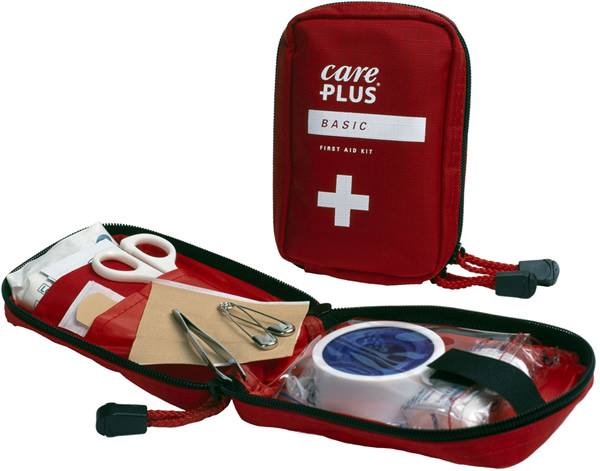
While holidays should be a time for relaxation, adventure and great times, we cannot take all of the comforts
of home away with us. Some things, however, should definitely make it into your suitcase before you head out the
door on a trip.
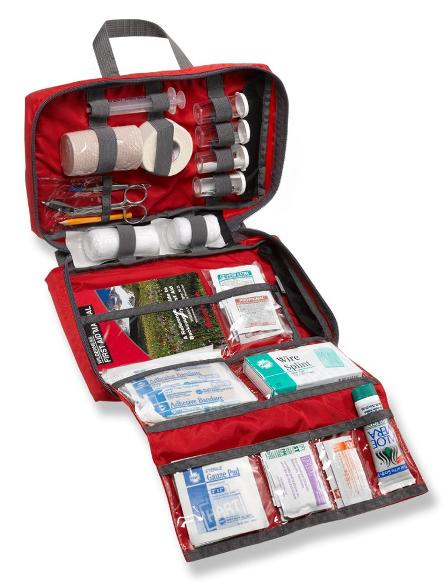 First, separate your daily medication (usual treatments, contraception, malaria pills) from the emergency
medical kit (used less frequently)
The medical kit is to be used in emergency situations. It should be small and compact so you can easily take it
with you on all excursions.
Here are a few tips to help you put together an adequate medical kit:
First, separate your daily medication (usual treatments, contraception, malaria pills) from the emergency
medical kit (used less frequently)
The medical kit is to be used in emergency situations. It should be small and compact so you can easily take it
with you on all excursions.
Here are a few tips to help you put together an adequate medical kit:

This is the basic lists for the climbing groups, expeditions and trekkers who are going toisolated areas alone.

Nepal trekking is one of the interesting and a unique experience of Himalayan treks there are four major trekking grades you can find in Nepal. Before booking trekking package in Nepal, It is necessary you have to know about trekking destination and its difficulty, before departing to trekking in Nepal. On the contest of Nepal there are four type of Trekking package you can find in Nepal, We declared the given trekking grade of Nepal according to the climate, altitude, and environment of the trekking regions of Nepal. There are four major trekking grades that you can arrange treks in Nepal such as backpacking, tea house treks, camping treks, self arranged treks and treks arranged through a Guide. You can choose trekking type also which is suitable for your physical fitness before departing to trekking in Nepal. It’s important to match your fitness level for your suitability.
We proudly inform the Nepal traveler about Easy trekking in Himalayan region Nepal. There are plenty of ups and downs on well-maintained easy trekking trails of Nepal. Easy trekking type of trip is best suited for those who lead a reasonably active life. Easy trek takes grade indicates that you have to walking for only four to six hrs per day. It depends on your walking speed. Most of the easy trekking trips are not necessary to hike higher than 2700 meters. Easy trekking trips usually consist of around three to seven days of camping or tea house trekking in nepal. Most of the trekkers will require only minimal preparation for easy treks in Himalayan foot hills of Nepal. Trekkers who have not any previous trekking experience, we offer a diverse range of easy treks in Nepal. Easy Trekking is suitable for everyone. Visit Nepal once in life time and enjoy its natural beauty yourself. Culture experiences and historic sites are the main focus of these trips.
Moderate trekking in Nepal you have to walking in Himalayan foot hills five to seven hrs per day. Most of the moderate trekking trips are not necessary to hike higher than 5000 meters. Moderate trekking trips usually consist of around five to ten days of camping or tea house trekking. Paths are always well defined, but we will be spending time at altitudes above 3000 meters and we reach the 5000 meters sometimes of the route. If you are not particularly active, regular pre–trip exercise is strongly recommended for all of the moderate trekking packages in Nepal.
Difficult Trekking packages nepal are generally longer and more strenuous with long ascents & descents, steep gradients, rough ground, some backpacking. Mountain walking experience, high standard of physical fitness and stamina are essential to get success for Difficult Trekking in Nepal. difficult treks are best described as Alpine, and suitable for those in excellent health and physical fitness, capable of carrying a backpack, when necessary. Challenging trek covers remote areas of Nepal, traveling over snow-capped passes at altitudes of up to 6500m.You have to walk in Himalayan region up to eight hrs everyday during Difficult trekking period. Most of the Difficult treks are fully supported; you have to stay overnight at about above 4000 meters.
Strenuous Trekking in Nepal should only be undertaken by those with some previous mountain walking experience. They ascend to altitudes of up to 5500m and involve some steep climbing, although it is necessary to use ropes. Treks at Strenuous level can be arranged for periods of three week duration and could be longer. Strenuous Trekking trails are sometimes uncharted and away from inhabited areas. In Strenuous trekking period, most of the days we have to spend like moderate trekking. Some of the trekking days are unavoidably, slightly difficult and longer. You have to walk Six to eight hours with longer ascents, the scramble on an exposed ridge and rough condition. Good level of fitness is highly recommended for Strenuous Trekking tour in Nepal.
Choose Your Trekking Program According To Your Interest And Physical Fitness

The form of greeting in Nepal is “Namaste” performing by joining both palms together. It literally means “the divine in me salutes the divine in you”.
1. Do not trek alone. There have been numerous disappearances of solo trekkers in recent years. Always hire a guide or trek with other people. There are online forums where travelers can look for fellow-trekkers. This applies to everyone but especially women that are travelling single – they seem to more vulnerable. Always communicate your travel plans to your next of kin.
2. Food safety - Avoid water that is not bottled or boiled. Avoid raw vegetables and pre-cut fruit as much as possible.
3. Even though Nepal is known for its pristine environment and beauty – not the highways and major city streets. They are crowded with traffic, full of smoke and bumpy and dusty. Hence travelling on a bicycle or a motorbike for the most part is not advisable. There are some off-road mountain bike trails that are ok to do.
4. Do not give money to beggars that you see on the streets. Even though they look pitiful, your giving away of money encourages them only to beg for more. If you really care support one of many charity organizations working in Nepal.
5. Be sure to exchange back all the Nepalese currencies before you leave. They are not accepted (or even exchanged for that matter) outside of Nepal . Besides, taking currency out of the country is against the law.
6. Do not touch someone’s head or sit showing the bottom of your feet towards them. It is considered rude.
7. Do not fully rely on schedules and times that are committed to you whether in verbal or written while you are in Nepal . They may not commence in time as stated or committed and may end up disrupting all your subsequent schedule. Have time buffer as much as you can between your major plans and activities, especially if you have a hard stop date that you need to fly out by.
8. Always be alert/aware of “Bandhs” (Strikes – where no transportation is allowed) as they can alter all your travel plans substantially.
9. Do not assume that “ganja” (marijuana) is legal in Nepal . It is not. Even though it is a common weed on hillsides you can get in trouble for picking it and carrying it for consumption purpose.
10. Do not assume that when a Nepali says “yes” or shakes the head in affirmation that it is a done deal or they agree with you. Re-confirm using simplest of words but being as direct as possible to make sure.
11. Stay away from dance bars in KTM and PKR. These are tourist traps where they scam you on buying alcohol and food at much inflated prices. Some of these places have a history of intimidation and violence.
12. If you are planning to apply for the Visa at the airport, make sure to have passport size photo available. Plan B is to have your photo taken at the booth at the airport.
13. All nightlife pretty much ends by 10 pm with only a few places around the Thamel area that may stay open a little later.
14. Bring a universal plug and voltage adapter kit for your Electronics. In Nepal we use 220V adapter.
15. Keep in mind that there may be an entrance fee to some of the common temples and public areas applicable only to foreigners ranging anywhere from 250R's - 700R's.
16. Always have some tissue paper and hand sanitizer with you at all times – and note that some of the toilets may require squatting.
17. Insist for a Running Meter in the Taxi. After 10 PM you do pay double of the meter fare however – that’s the commonly accepted norm.
18. Avoid displaying food around monkeys around temples, as they are used to snatching it.
19. Support the NON-Plastic Initiative, please limit your use of plastic items, and help make Nepal a better place.

Trekking poles (also known as hiking poles, hiking sticks or walking poles) are a common hiking accessory used to assist walkers with their rhythm and provide stability on rough terrain. During the trekking if you use Trekking Poles we have some advantages:
Trekking poles provide experienced bush walkers with a valuable aid to stability when negotiating steep descents and obstacles (creek crossings etc). Poles might engage the ground to the front, side or behind - together as a pair, or one at a time. Specific pole techniques in this mode are limited only by individual experience and imagination.
Poles for health & fitness
When poles aren't required for stability in the difficult sections, they can be engaged to help the walking and to contribute to improved health and fitness. These techniques are much more specific and they need some explanation.
Bush walkers who use just one pole for some added stability get only that one benefit. Poles are used as a pair to receive the full health and fitness benefits. The new generation poles are very much lighter, quicker/easier to operate and much more compact when stowed. The old reasons for using just one pole no longer apply.
Hand Position - Important!
It's easy to overlook the wrist strap, but it's a very important part of the trekking pole. The strap takes all the weight and allows the hand to relax.
With the pole in the normal vertical position and the wrist strap hanging normally from the grip (brand name out and untwisted), enter the cupped hand into the wrist strap loop from underneath.
Pass the hand right through until the wrist strap loop makes contact with the start of the forearm.
Now open the hand and bring it down to surround the grip normally. When you push down on the pole, you will feel the wrist strap supporting the lower edge of the hand close to the wrist.
Adjust the length of the wrist strap to position the hand comfortably at the grip until the wrist strap feels supportive. The strap takes the load via the wrist/arm - not the hand grip via the fingers/hand.
Adjust the length of the wrist strap to position the hand comfortably at the grip until the wrist strap feels supportive. The strap takes the load via the wrist/arm - not the hand grip via the fingers/hand.
Relax the hand. Just bring thumb and forefinger tips together to lightly surround the grip. This practice helps avoid the common mistake of grasping the grip too firmly which can cause hand fatigue and interfere with good pole technique.
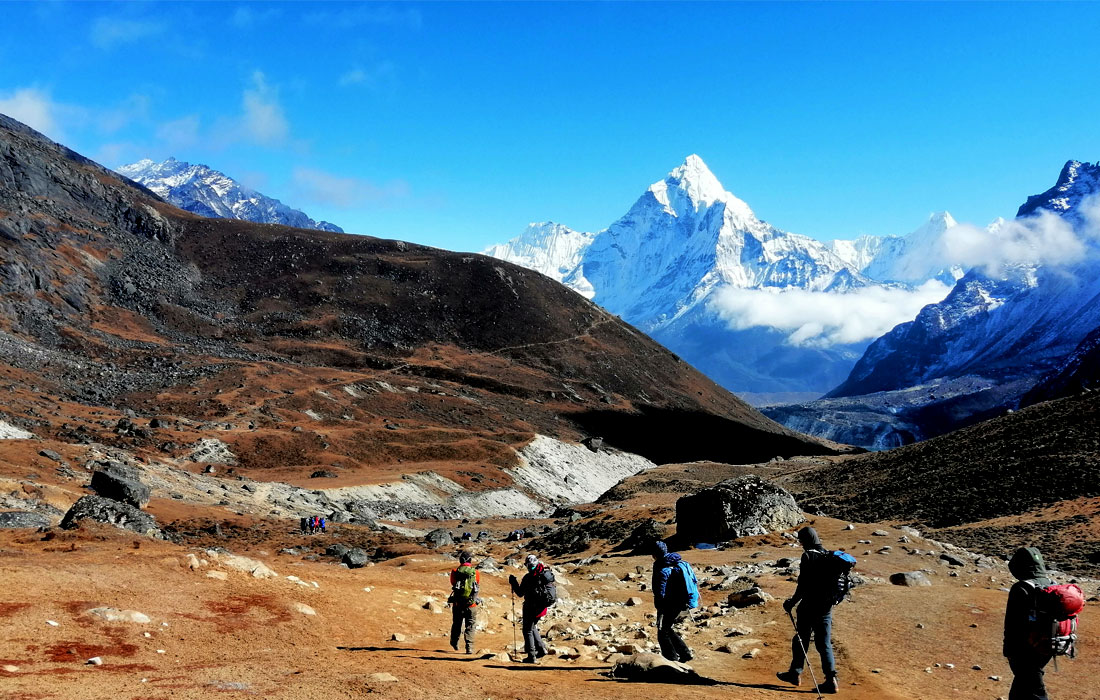
Nepal we are providing you several kinds of trekking tours : Popular one is the tea house trek ( Inn to INN walking), we eat and sleep in those simple lodges in the mountains. The other one is the camping trek means a tented trek we organize with whole trekking crew, also called organized trek (camping trek ) Or some are village homestay treks, in local people's house in the mountains of Nepal.
Also known as lodge trekking is a relatively cheap way of trekking in where meals and accommodation are provided in a teahouse. In Nepal, it is quite popular to trekking along the many trails, stopping each night to eat and sleep at a local Tea House. Meals depend on the menu at the tea house, usually the simple basic meals of the local people. Although many tea houses and hotels in the hills and mountains are reasonably comfortable, some may be dirty and, in areas where chimneys are rare, rooms may be smoky.
It's a great way to connect with some of the local culture and definitely suits trekkers not wanting to carry back-crushing rucksacks. The standard of lodgings can vary from very similar to a hotel, to something far more rustic.

The classic style of trekking in Nepal and can be conducted almost anywhere in the country. Camping trekking is fully organised and supported with a team of guides, cooks, sherpas and porters to accompany you.
All the necessary trekking gears; food, fuel and other goods are carried by the porters. The cook will prepare all the meals during the camping trek. Trekkers need to carry only a small bag as required for the day. At night, tents for dining, sleeping and ablution are provided and set up. Mattresses, sleeping bags, tables and seating are arranged by staff. A Sirdar (chief guide) is employed to pre-arrange and then to oversee the entire program. All land transportation, local permits, taxes, porter insurance, port dues and entrance fees to National Parks or sites constituting an integral part of the trip are arranged.
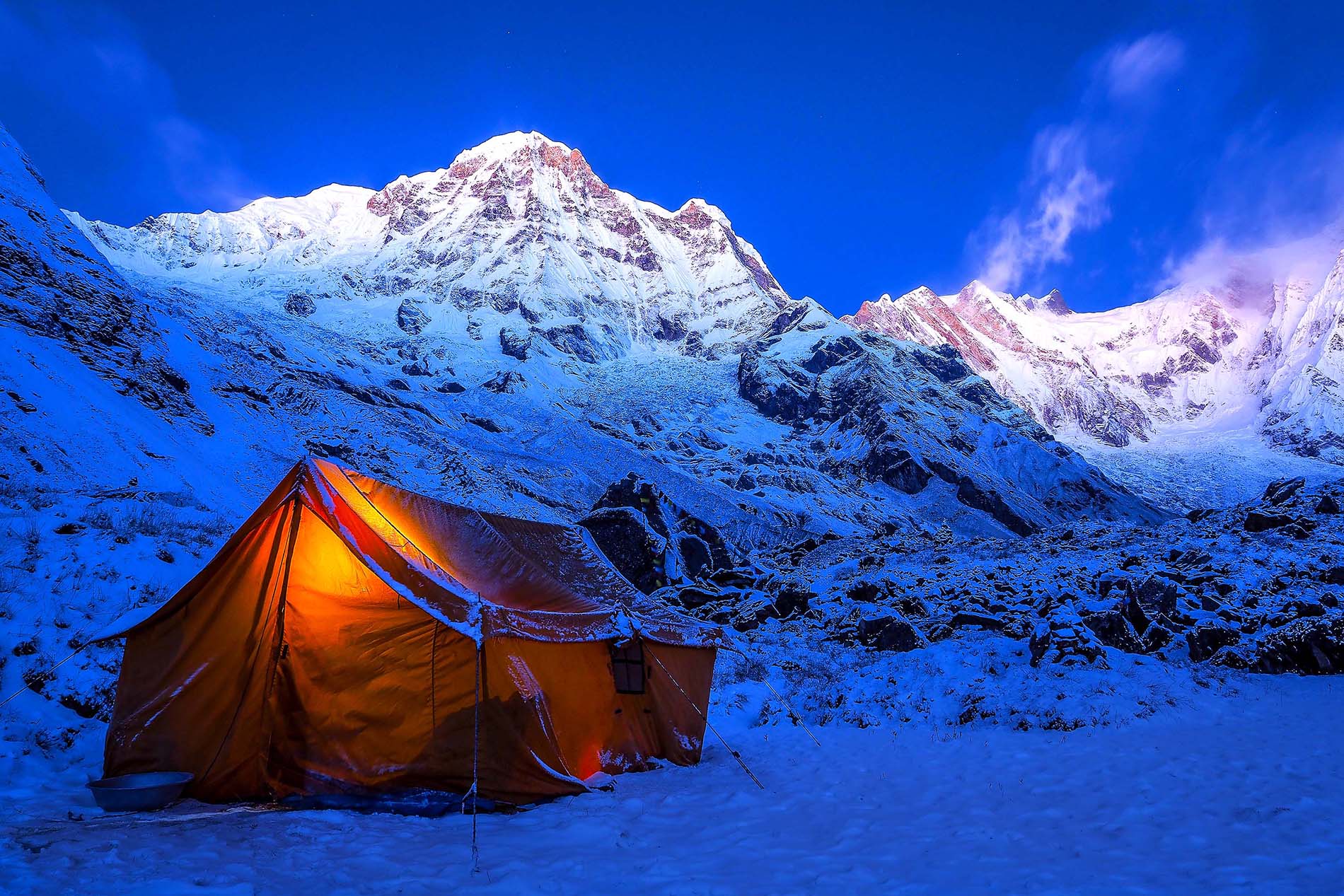
In recent days we have developed some home stay treks in Nepal called village tourism for sustainable tourism, to generate the income for local people in rural area. Chitwan Chepang Hill trails, Langtang Tamang Heritage trails, Ghale Geoun – Ghana Pokhara, Ruby valley trek, Rara trek are few to name. In this Himalayan treks you may stay few nights with a local family or in an alternative ‘home’ such as monastery with guest accommodation, or a large family house which has been extended to provide rooms for paying visitors. Accommodation and facilities in these home stays tend to be very simple. Please contact to us if you are considering a trip which includes home stays and would like.
